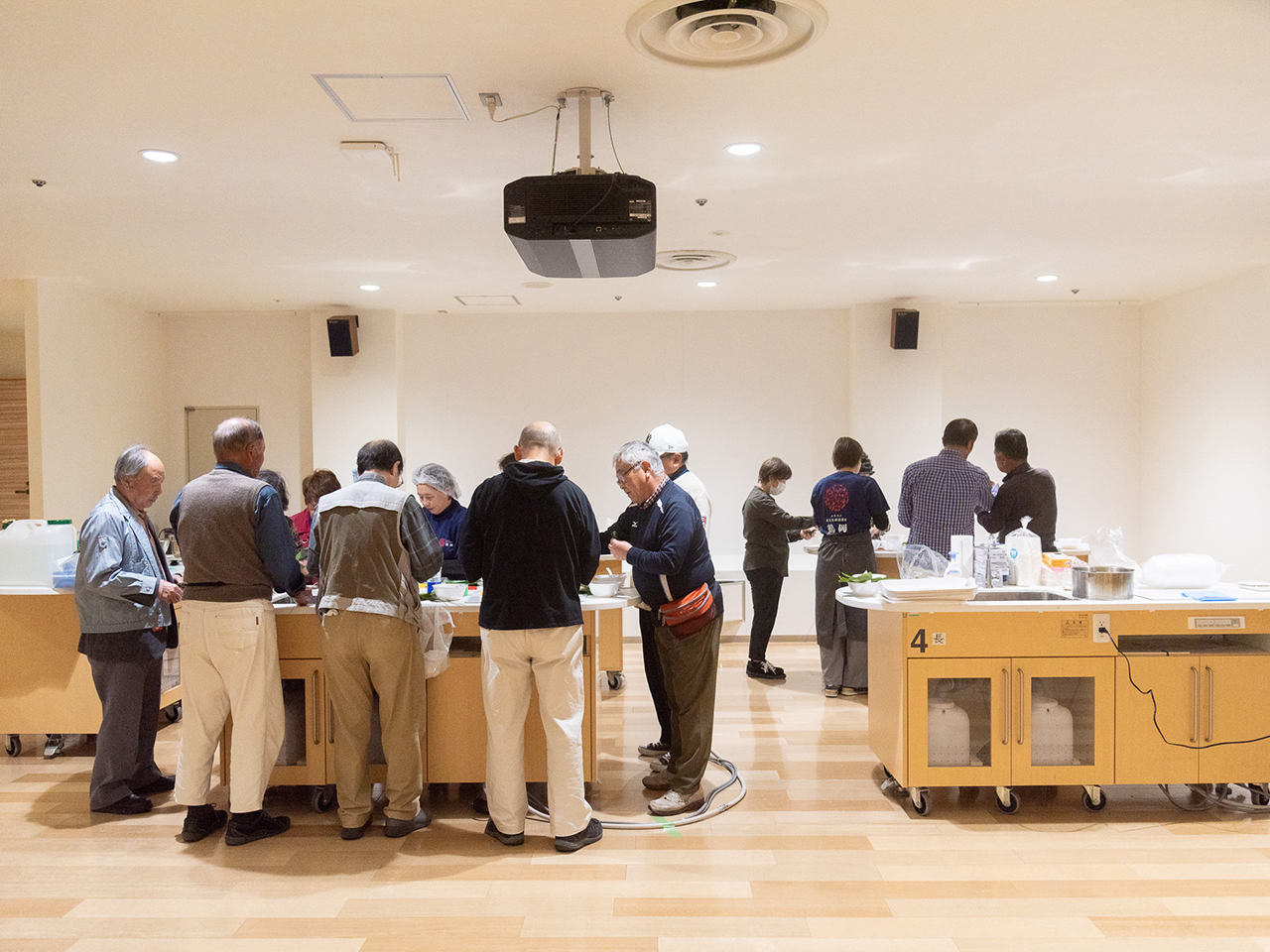
Experience Making the Traditional Sweet “Sasamaki” and the Local Dish “Imoni”! Agricultural & Culinary Culture Report Vol. 2
A six-day, five-night tour focusing on agriculture and culinary culture was held in Tsuruoka City, Yamagata Prefecture. The main activities included three days of Shonai persimmon harvesting, a day of sightseeing, and a culinary experience on the final day. On the last day, participants tried their hand at making Tsuruoka’s traditional sweet, “Sasamaki (笹巻),” and the local dish, “Imoni (芋煮) .”
→Harvest Experience at a Persimmon Farm in Tsuruoka! ~Agricultural & Culinary Culture Report Vol. 1~
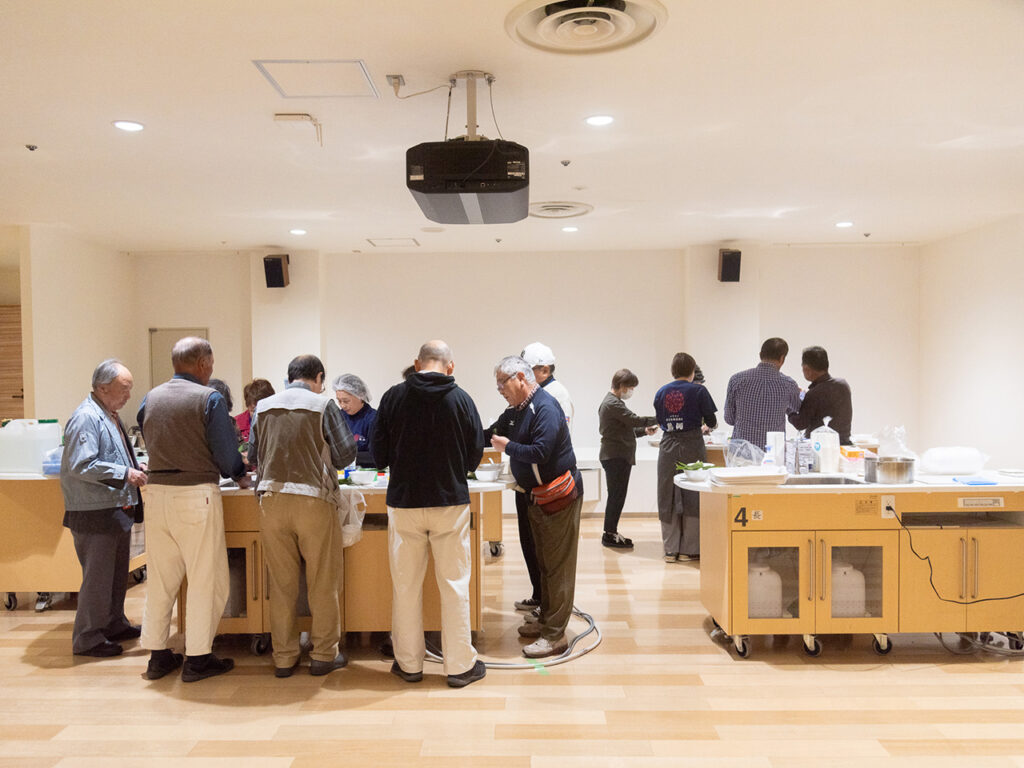
The culinary experience took place at “Tsuruoka Food Culture Market FOODEVER,” located in front of JR Tsuruoka Station. The first part of the experience focused on making “Sasamaki,” a traditional confectionery with over 230 years of history.
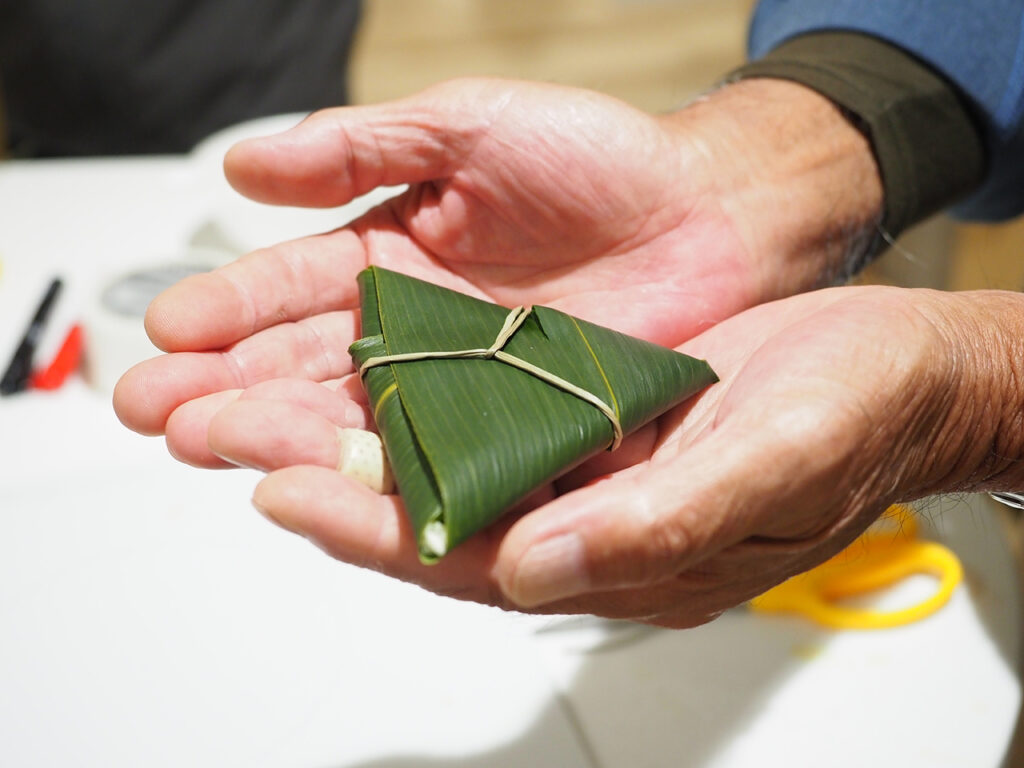
Sasamaki is an essential delicacy for the Boys’ Festival (Tango no Sekku 端午の節句) and is known for its high preservation quality, yellowish hue, and chewy texture. In 2024, the technique for making Sasamaki in Shonai was designated a Registered Intangible Folk Cultural Property of Japan.
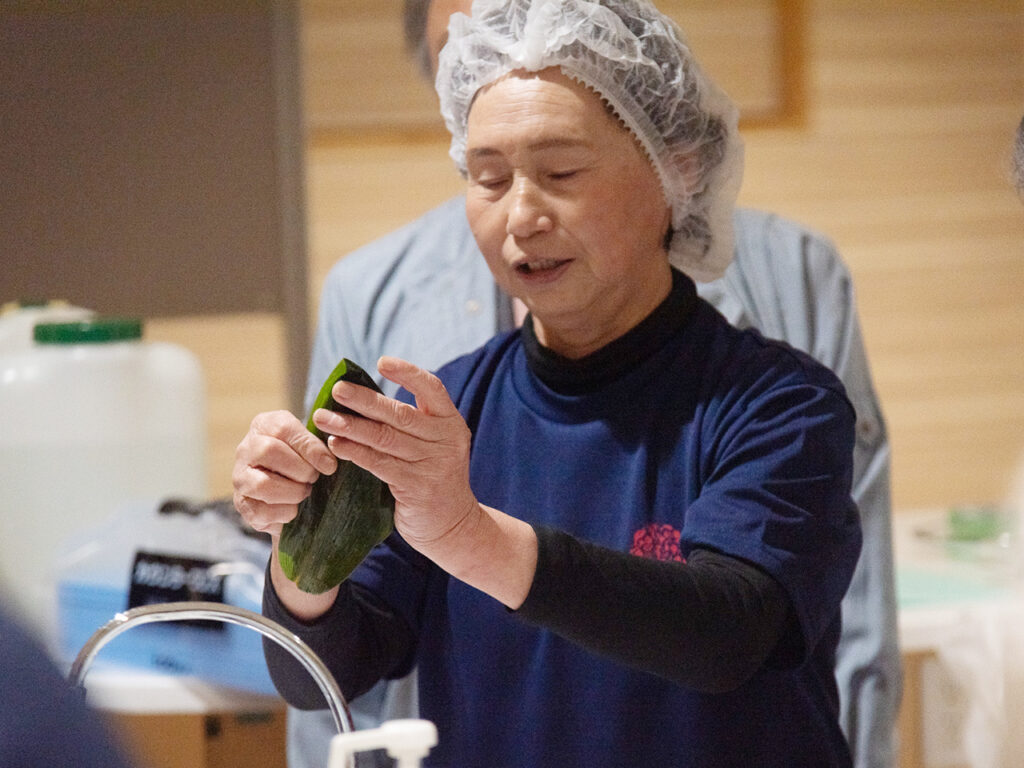
Participants were guided by Sasamaki expert Masuko Ito, who has over 40 years of experience. Her Sasamaki is also sold at the local farmers’ market, Sanchoku Asahi-Goo (産直あさひグー) .
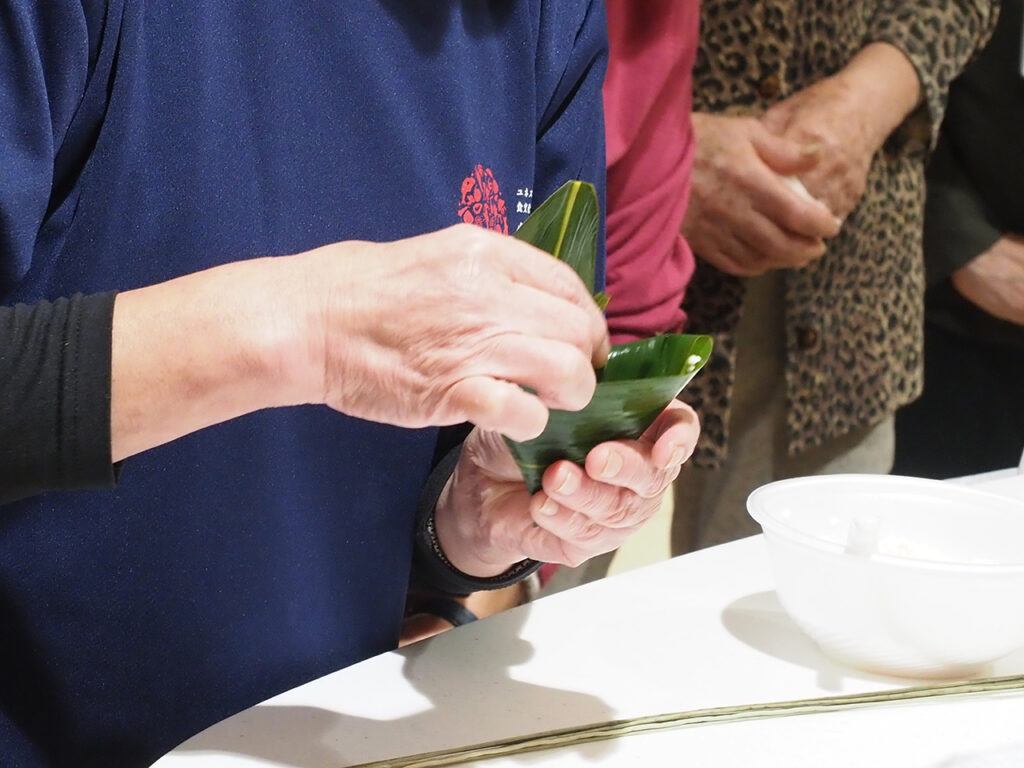
Sasamaki is made by wrapping glutinous rice soaked in lye with bamboo leaves and boiling the package. For this experience, participants learned to wrap the bamboo leaves and fill them with rice. Both the bamboo leaves and the glutinous rice were locally sourced from Tsuruoka.
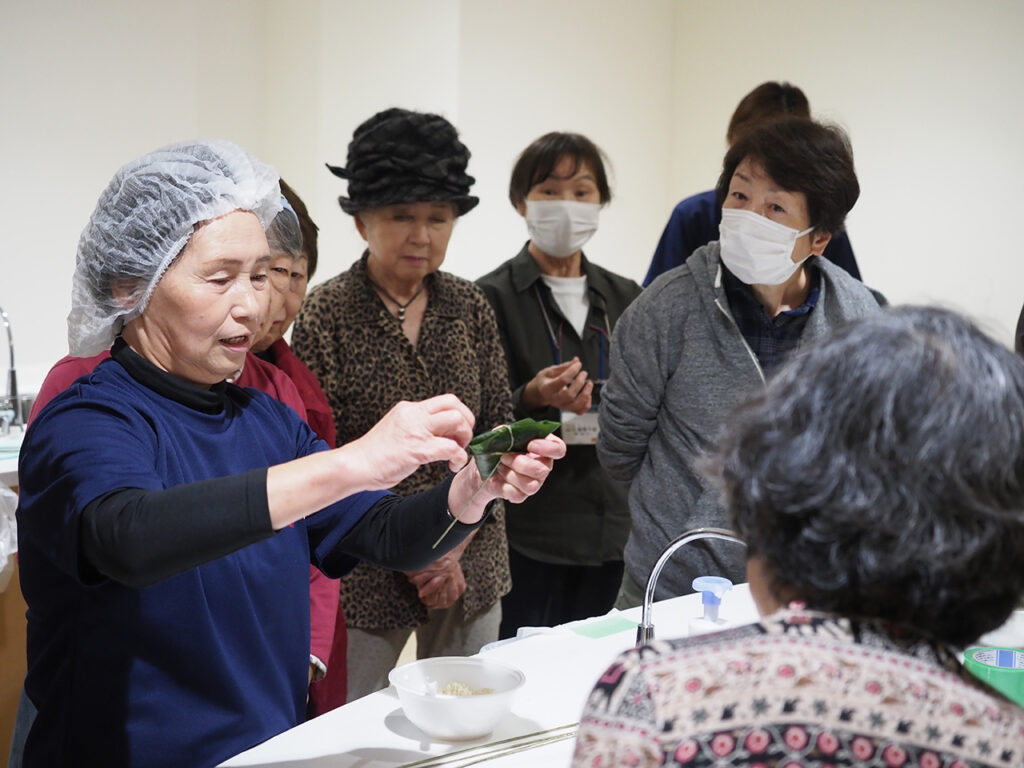
Gathering around the kitchen table, participants received a demonstration from Ms. Ito. First, bamboo leaves were layered to form a cone, filled with lye-soaked rice, and tied with a string called Igusa. The process was challenging for first-timers, requiring repeated attempts under Ms. Ito’s patient guidance.
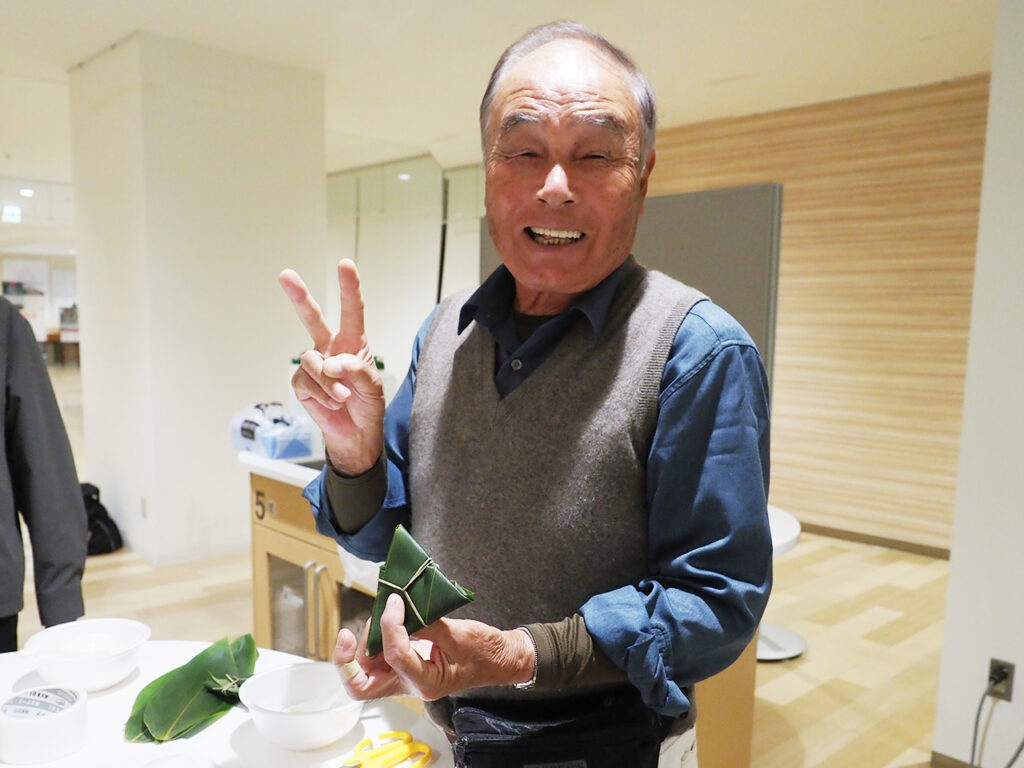
“It’s tricky but so much fun!” exclaimed one participant with a beaming smile.
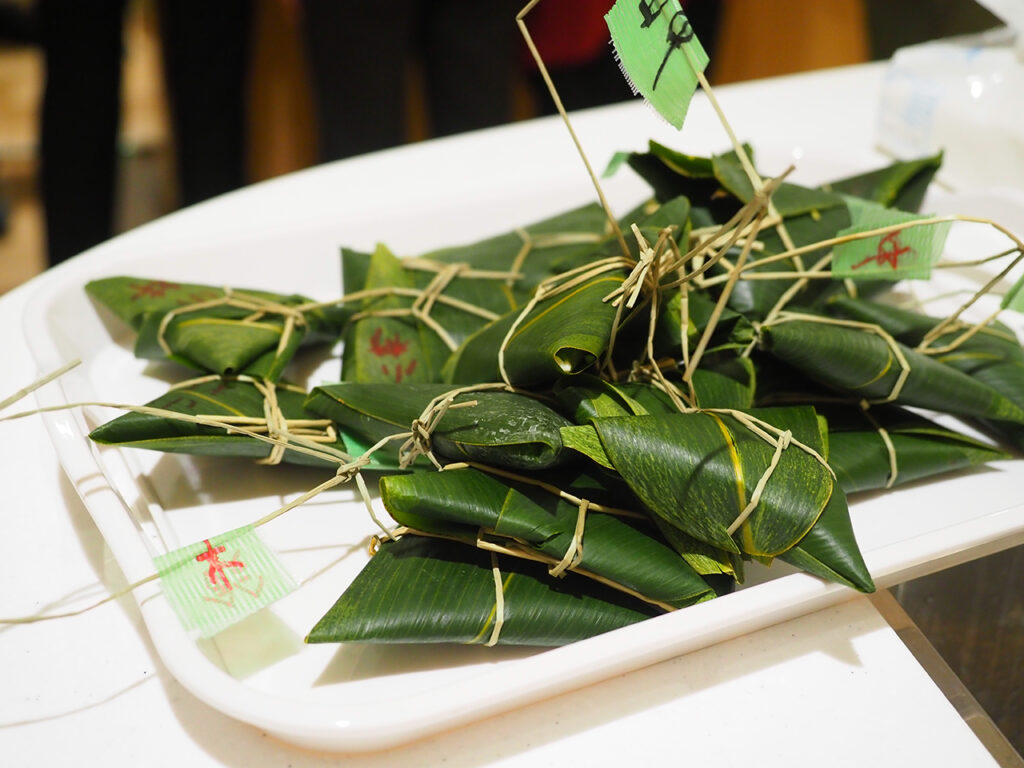
Each person made three to four Sasamaki.
Cooking the Local Dish “Imoni”
While the Sasamaki was being boiled by staff, participants moved on to cooking “Imoni,” a beloved local dish.
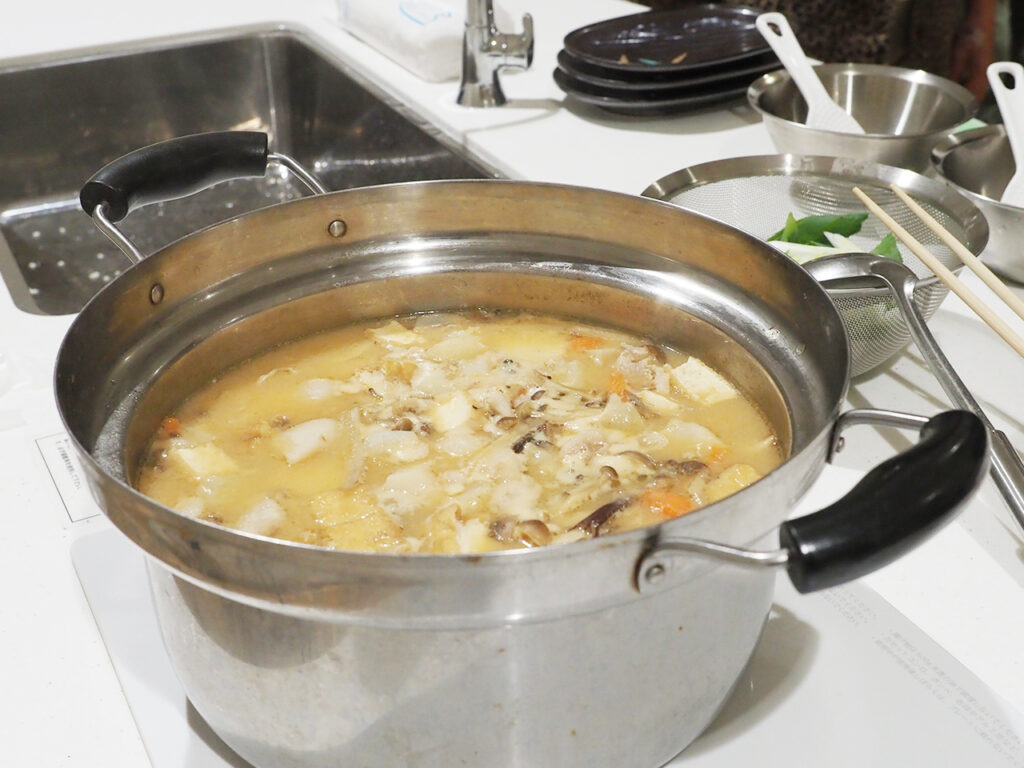
The lesson was led by the “Tsuruoka FŪDO (Food x Culture) Guides,” certified by the Tsuruoka Food Culture Creative City Promotion Council, which shares insights into the city’s food culture and history.
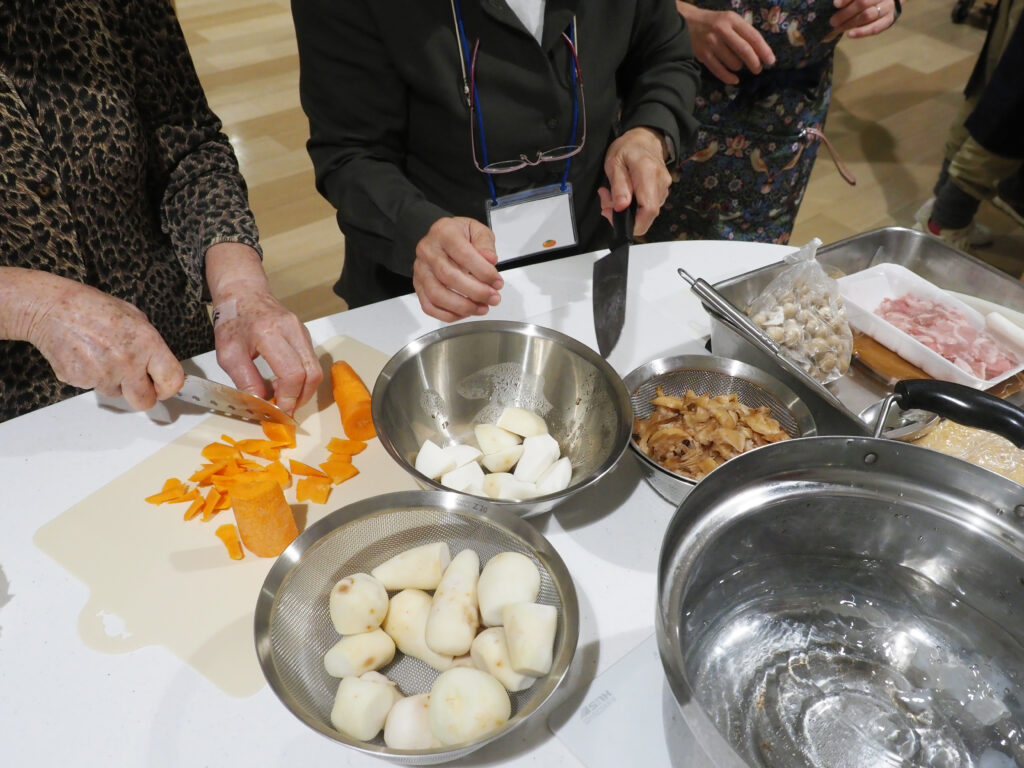
Imoni is a hearty Japanese soup centered around imo (taro root), a starchy and creamy-textured tuber. This traditional dish is a specialty of Yamagata Prefecture, especially popular in autumn during outdoor gatherings called “imoni-kai.” The soup combines taro with vegetables, meat, and seasonings, with distinct regional variations.
In inland areas of Yamagata, imoni is made with beef and soy sauce-based seasoning, while the Shonai region, including Tsuruoka, features a version using pork and miso. The Shonai-style imoni often includes pork, taro, green onions, fried tofu, konnyaku, and shiitake mushrooms. This comforting dish highlights the local flavors and ingredients, making it a beloved part of Yamagata’s food culture.
Experienced participants handled the cooking confidently and smoothly.
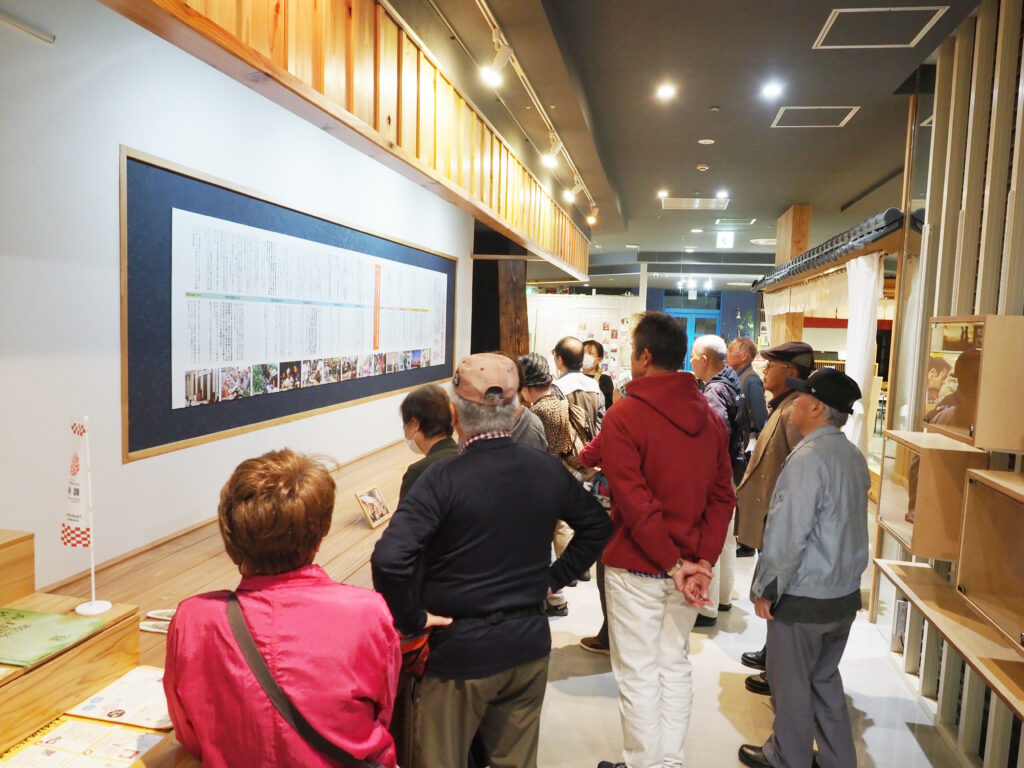
Between cooking steps, a mini-tour was conducted within FOODEVER, introducing participants to Tsuruoka’s food culture and local sake. The staff of the FŪDO Guide shared stories about Tsuruoka’s diverse geography, cultural heritage, UNESCO recognition, and notable landmarks, such as its four hot spring areas and three Japan Heritage sites. Participants listened intently, gaining a deeper appreciation for how food culture connects with the region’s identity.
A Tasting Experience with Local Rice: Tsuyahime and Yukiwakamaru
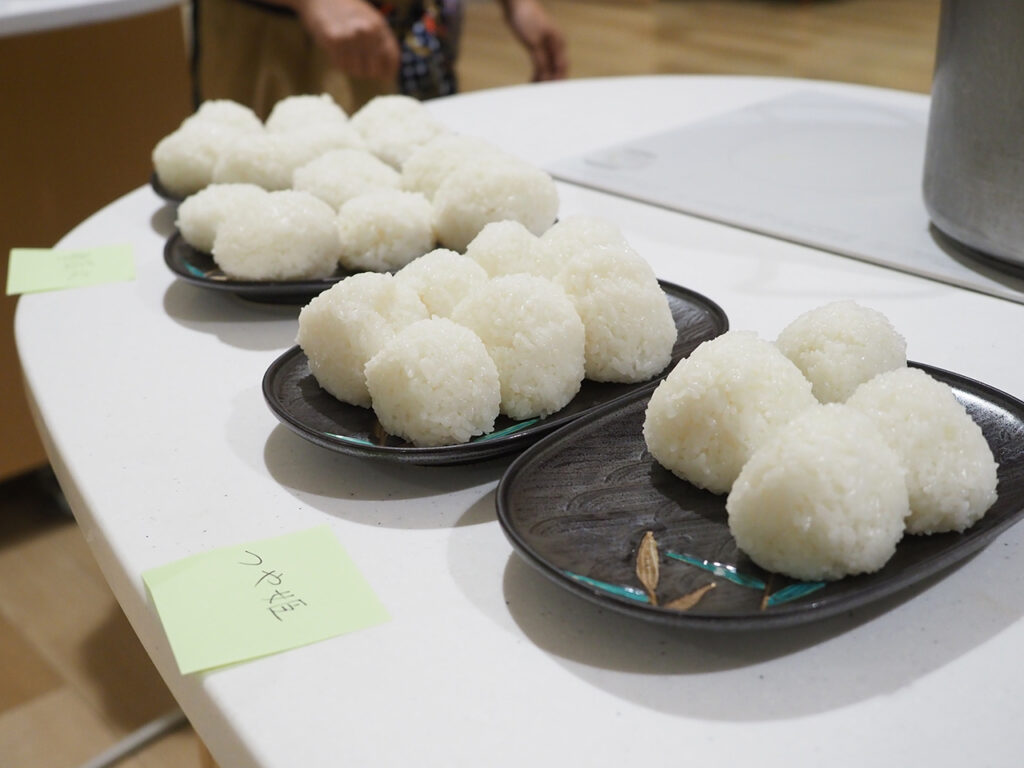
Once the Imoni was ready, it was time to taste. Participants enjoyed a luxurious comparison of two local rice brands, Tsuyahime (つや姫) and Yukiwakamaru (雪若丸), in the form of salted rice balls.
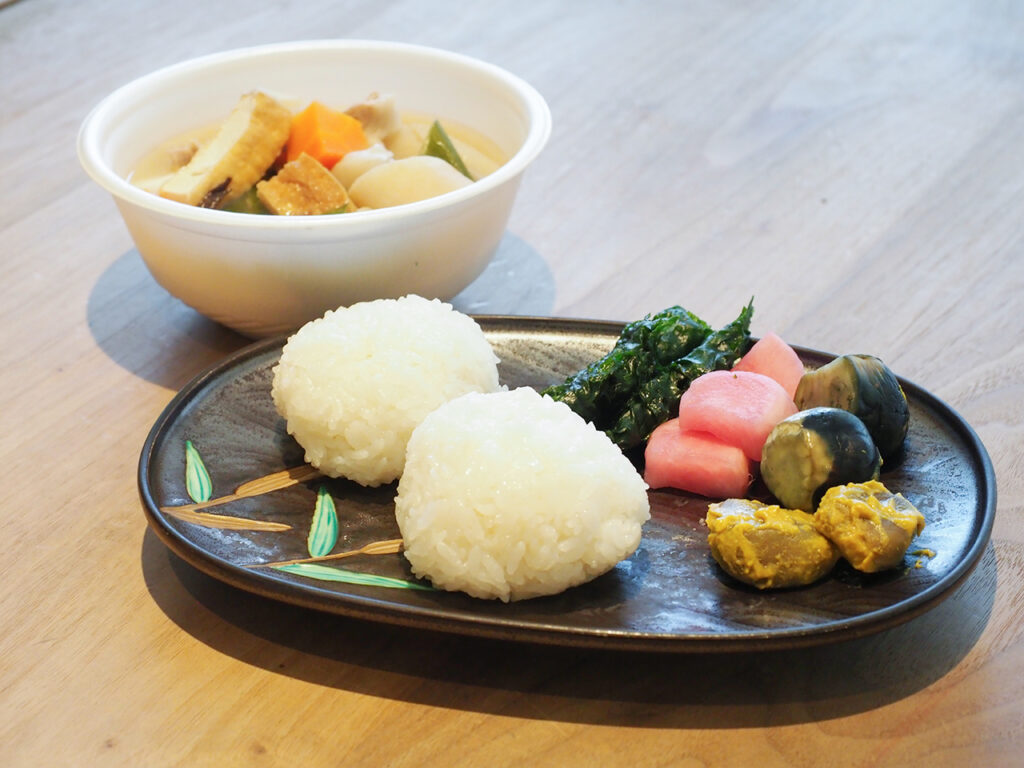
Side dishes included local heirloom vegetables such as Minden eggplant (Minden nasu 民田なす), pickled mustard, Atsumi turnips (Atsumi kabu 温海かぶ) grown through slash-and-burn farming, and shiso rolls (Shisomaki しそ巻き), providing a full sampling of Tsuruoka’s culinary culture.
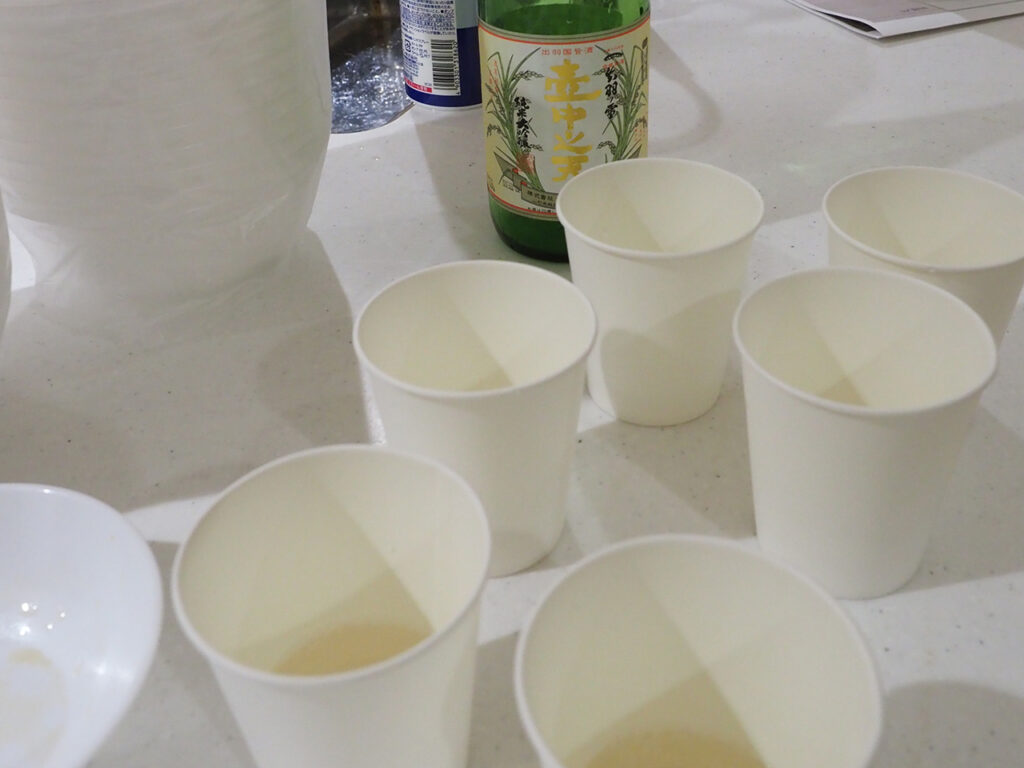
The sake used in cooking the Imoni, “Kochu no Ten (壺中之天),” from Watarai Honten Brewery (渡會本店) in Tsuruoka’s Oyama district, was also served in small tasting portions. It is a junmai daiginjo sake with a fruity and elegant flavor. Using it for cooking feels truly luxurious!
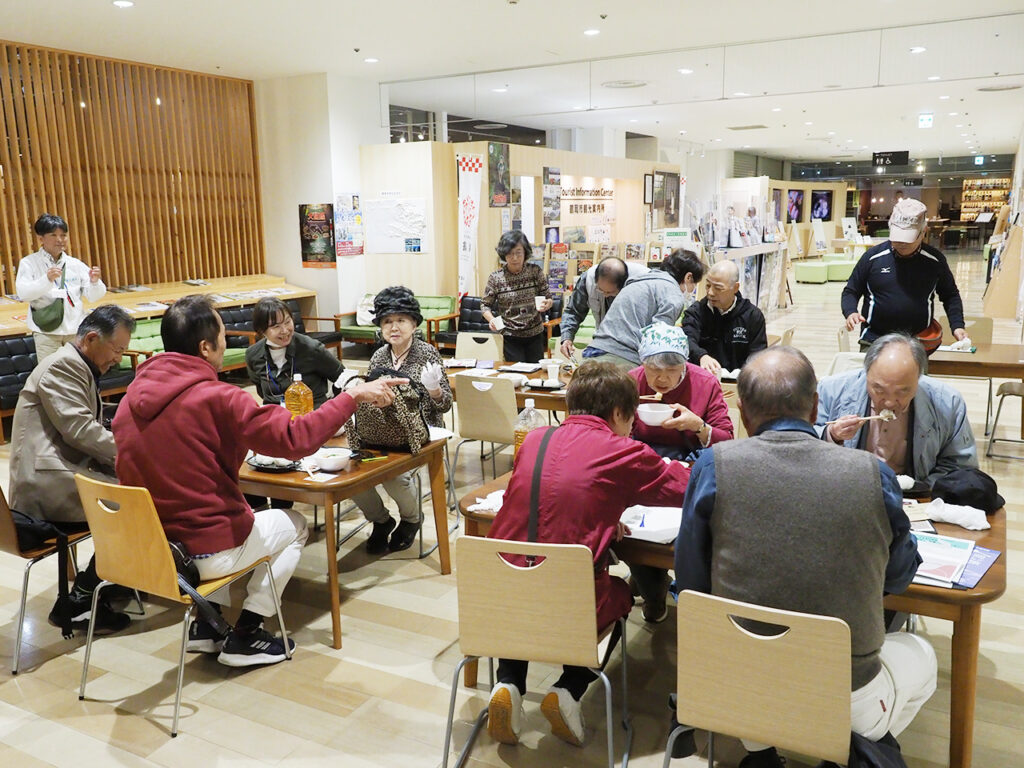
Participants expressed their delight:
“Both rice varieties are delicious.”
“The taste is so comforting.”
“I’d love to bring some home as souvenirs.”
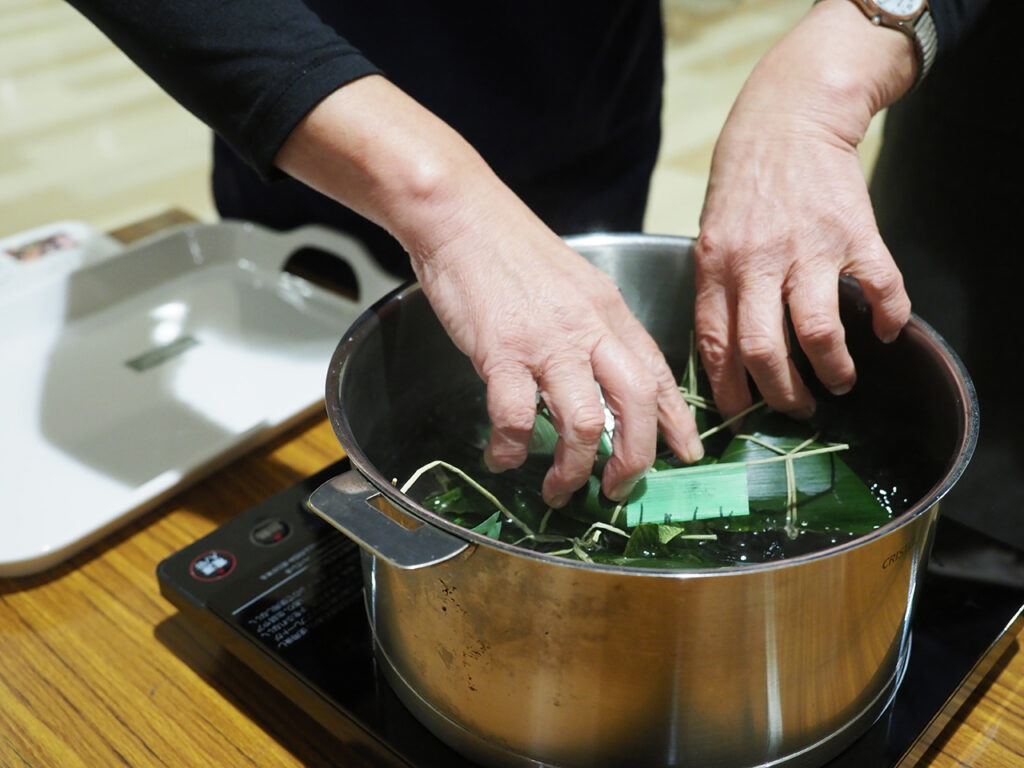
The staff boiled and chilled the Sasamaki, which participants took home as souvenirs.
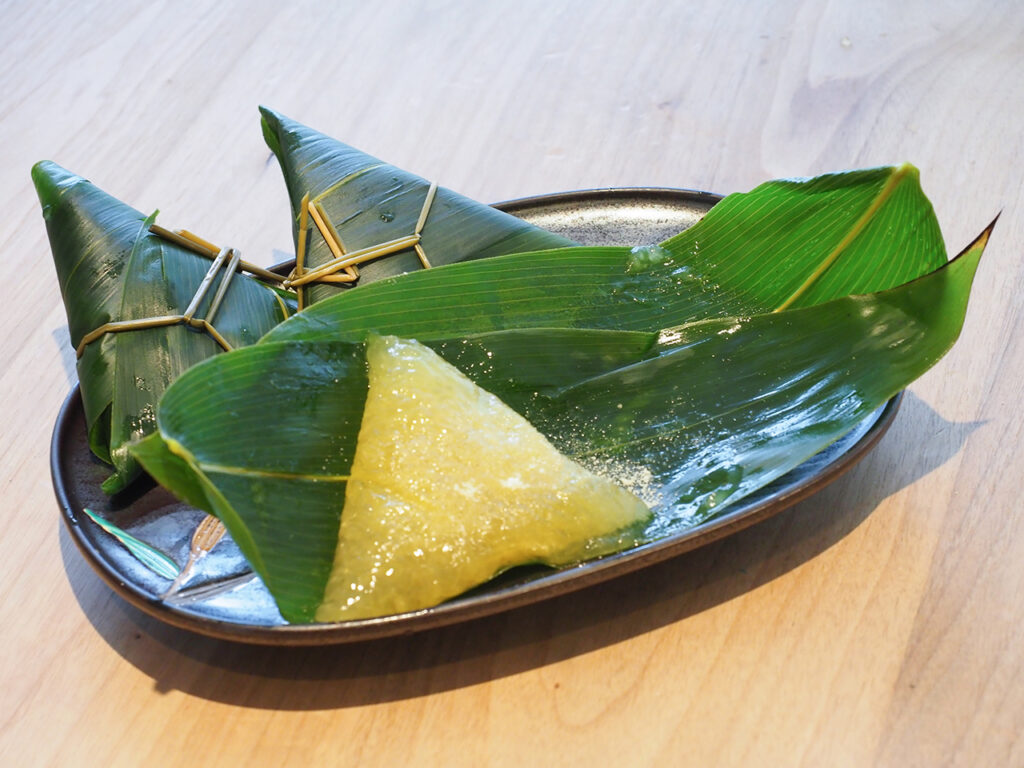
Unwrapping the bamboo leaves revealed a yellow, jiggly treat. It’s best enjoyed with kinako (roasted soybean flour) or black syrup.
Experience the Charm of Tsuruoka
The culinary experience provided a special opportunity to taste, understand, and connect deeply with the region’s history and way of life. Through this tour, participants not only engaged with agriculture and culinary culture but also enjoyed meaningful exchanges with local residents, gaining a firsthand appreciation of Tsuruoka’s charm.
Various tours and events are held in Tsuruoka City, including those led by “Tsuruoka FŪDO (Food x Culture) Guides,” to showcase its rich food culture and agricultural products. For more information, please check the website below.
| Tsuruoka FŪDO Guides (Japanese) | https://tsuruoka-fudo-guide.com/ |
| TSURUOKA Creative City of Gastronomy | https://www.tsuruokagastronomy.com/ |
Note: Tour schedules are irregular.
This article is based on coverage conducted in autumn 2024.
| Related Site | Tsuruoka’s Traditional Sweet: “Sasamaki” |
